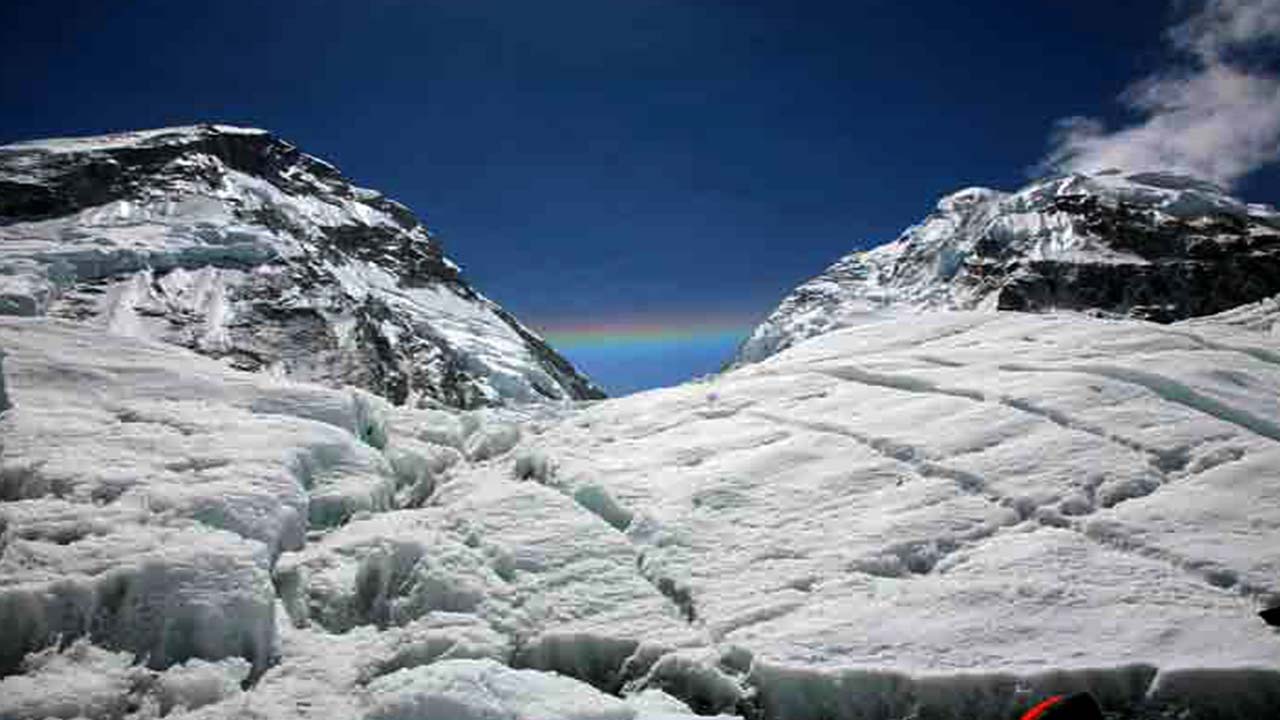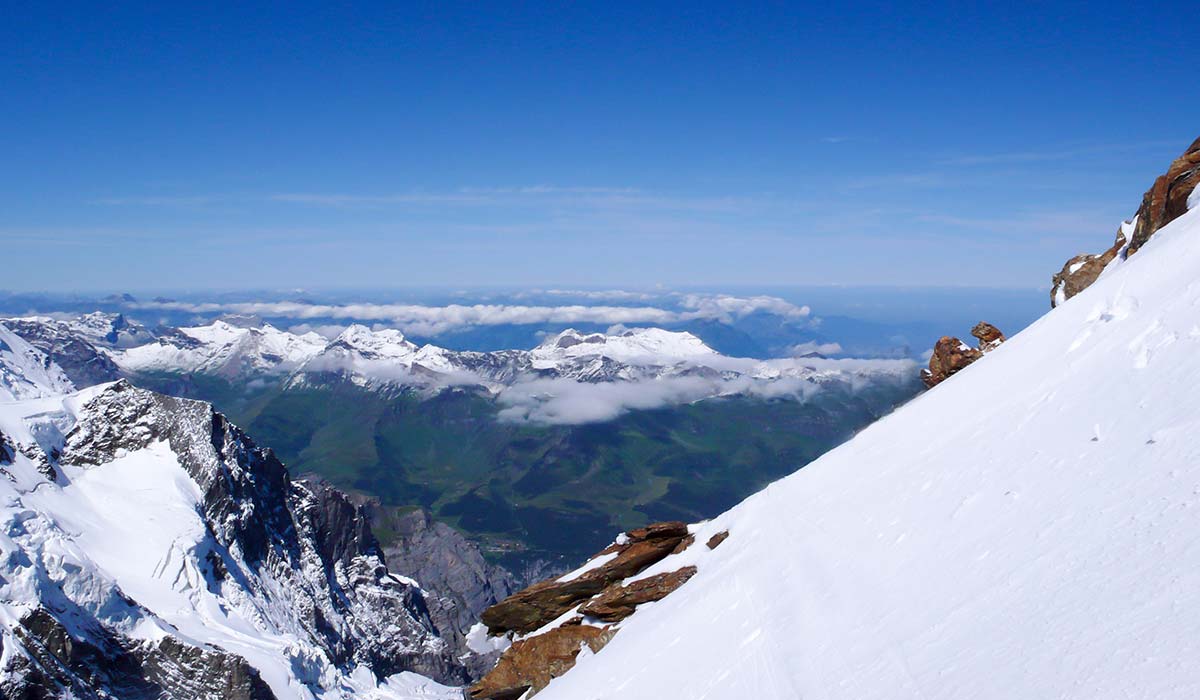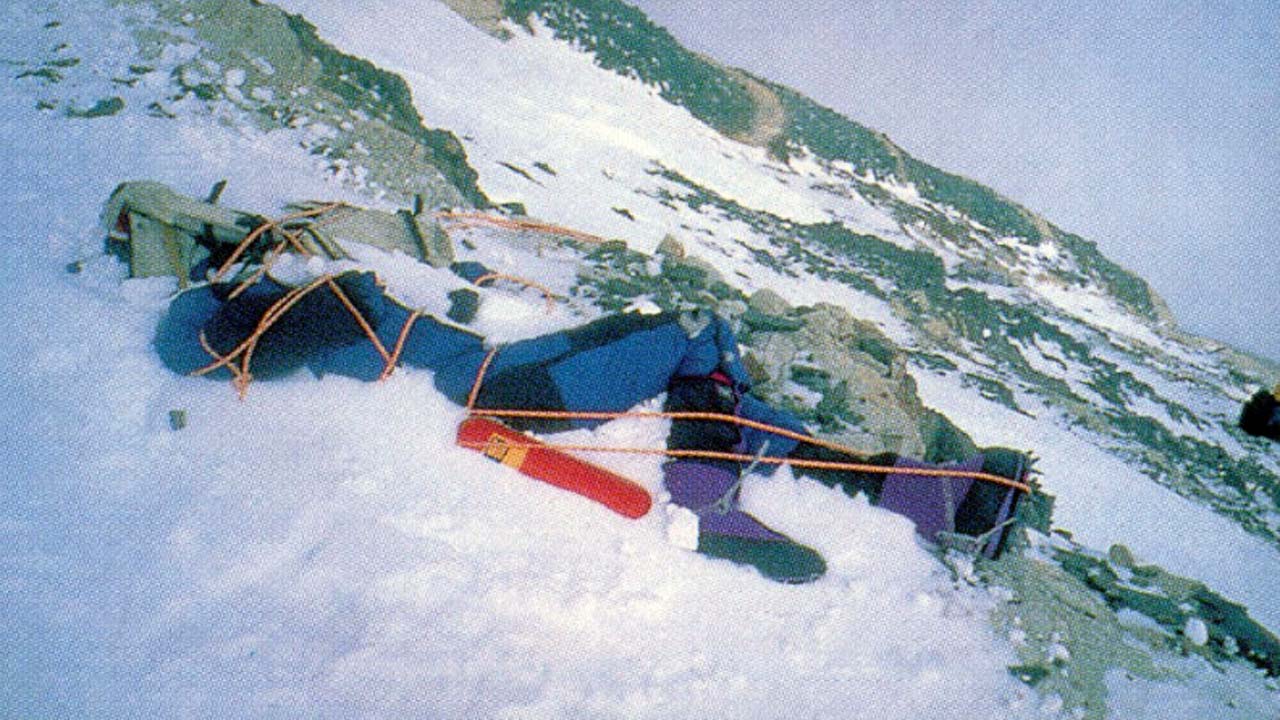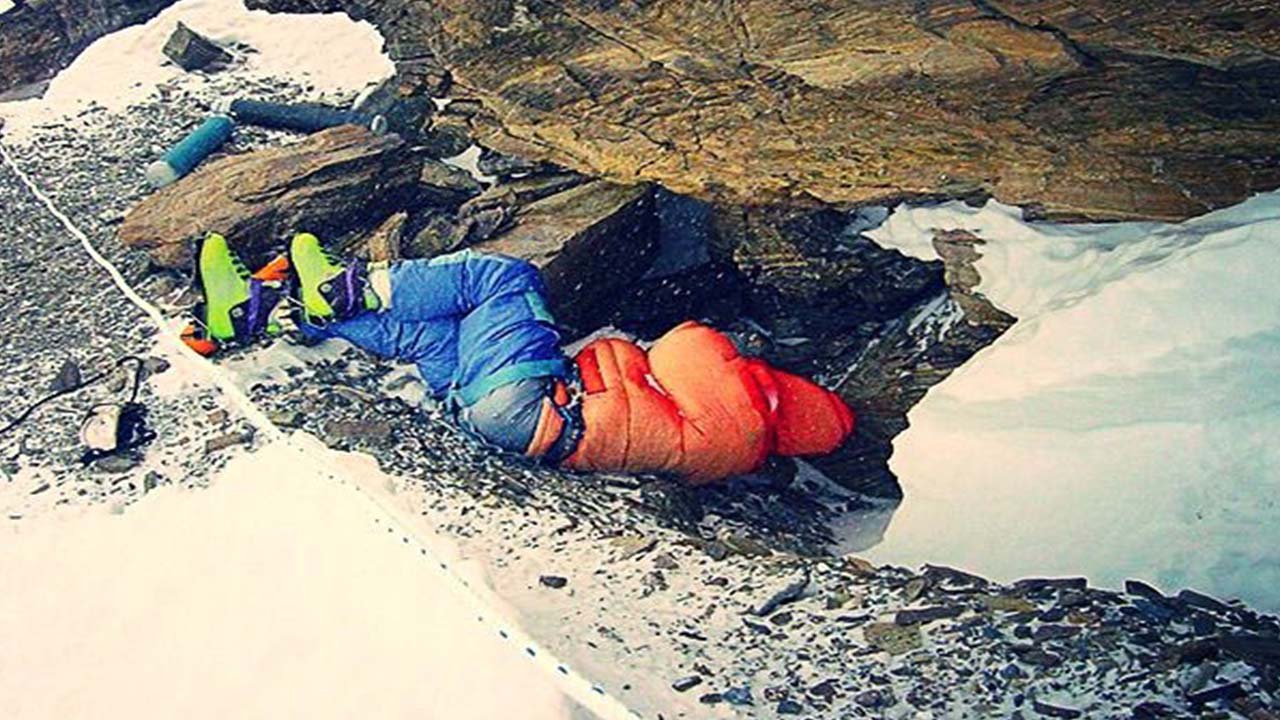The phrase ‘Everest Dead Bodies’ is a chilling but undeniable truth about the world’s highest peak. Mount Everest, the tallest mountain on the planet at an altitude of 8,848 meters (29,031 feet), is often seen as the symbol of ultimate human ambition. It is a towering challenge that has drawn dreamers, adventurers and thrill-seekers from every corner of the world. But, behind the triumphs and record-setting ascents lies a dark and more sobering truth: Everest is also a mountain of death. Since the 1920s, hundreds of climbers have perished on the snow of the mountain while chasing the summit.
Some slipped during descents, others fell due to exhaustion, some were struck by disaster and many simply disappeared into thin air without leaving a trace. The brutal environment on the mountain above 8,000 meters, also known as the Everest Death Zone, offers no room for error. Rescue is nearly impossible at this elevation and the human body starts to slowly crumble cell by cell due to the oxygen-starved atmosphere. As a result, As a result, many dead Everest climbers remain frozen on the slope, visible to passing climbers, preserved by ice and time.
The presence of these Everest dead bodies is more than a grim spectacle. Each one of these Mount Everest bodies tells a story of ambition, bravery, misjudgment, or heartbreaking isolation. They also serve as cautionary tales and painful reminders of what Everest truly demands from those who dare to ascend on its sacred grounds.
Are There Dead Bodies on Mount Everest? The Haunting Presence of Fallen Climbers
Yes, there are hundreds of dead bodies on Everest and the haunting part is that many of them are still visible on the mountain even today. Over 340 climbers have died attempting to summit Mount Everest since the first expeditions began in the 1920s. While some bodies have been recovered or buried on the slope of the mountain under snow and ice, a significant number of Everest dead bodies still remain exposed along the main climbing route.
The Mount Everest bodies are especially visible in the Everest death zone, which is above 8,000 meters. These Everest dead climbers have over time become grim landmarks for those making the same ascent. The presence of these bodies is not just a physical reality; it is also psychological. Climbers often need to bypass or step over the frozen corpses on their journey to the summit.

It is a chilling reminder that Mount Everest is not just a symbol of human feat but also of the fragility and the limitations. As the climbers pass these scattered bodies during the summit push, they understand that one misstep could make them part of the same silent legacy.
How Many Dead Bodies Are There on Mount Everest?
The grim legacy of Everest stretches far beyond its summit. As per the Himalayan Database, more than 340 people have perished on the snow of the tallest mountain in the world. Among those fallen climbers, an estimated 200 bodies still remain on the mountain. Many are still exposed to the elements and frozen in place. It means that roughly 60% of all Everest fatalities have not been reclaimed or buried.
But the numbers are based on definitions. Some deaths on the mountain remain undocumented, or the bodies buried under avalanche debris or ice, complicate the exact counts. The melting glaciers and the cleanup mission occasionally expose new bodies that were previously hidden, shifting the estimated number over time.
In addition to the natural challenges for the detection of dead bodies, there is also a discrepancy in how deaths are reported or categorized. While the Himalayan Database remains the most authoritative and reliable source for tracking fatalities on the mountain slope, it relies on the reports submitted by the expedition teams.
So, in the rare instances, some of the dead Everest climbers may go underreported or be misclassified, particularly during the chaotic climb seasons or in the unsupported expeditions on less-climbed routes.
Why Are There So Many Dead Bodies on Mount Everest?
The large number of Everest dead bodies is not just the result of tragic accidents during the expedition. But, they are also the outcome of a brutal combination of altitude, exhaustion, unforgiving terrain and unpredictable weather conditions. All of these combined make the survival above a certain point extraordinarily difficult.
Each year, hundreds of climbers attempt to reach the summit of the world’s highest peak, the ultimate challenge for every mountaineer. However, not all of them return; some perish on the icy slopes while chasing their dreams. Many climbers underestimate how harsh and deadly the upper reaches of this grand peak truly are.
The primary reason for why there are so many dead bodies on Mount Everest lies in what mountaineers refer to as the ‘Everest Death Zone’. This is the region above 8,000 meters where the oxygen level drops to about one-third of what it is at a normal sea level. At this altitude, the human body starts to slowly shut down, no matter how fit or acclimatized the climbers are.
Mt Everest Death Zone is part of the mountain where most deaths occur and it is also where many of the Everest dead bodies are left behind. Among climbers and non-climbers, this part of the mountain is also referred to as the ‘Everest Dead Body Zone’. But, altitude alone isn’t the only killer on the mountain.
Climbers inside the Everest death zone often face extreme fatigue, disorientation, hypothermia and other adverse forms of the AMS like High Altitude Pulmonary Edema (HAPE) and High Altitude Cerebral Edema (HACE). Likewise, the harsh terrain of Everest, from narrow ridgelines, rising ice walls to deep crevasses and unstable seracs, adds further challenges to the expedition.
Weather conditions at such heights can also change without warning. From a sunny day, the weather can change drastically into a deadly blizzard with zero visibility. So, when all these factors are combined, a single misstep or even a poorly timed ascent can make a difference between life and death. That’s why so many climbers have perished here and why Everest has earned its tragic reputation.
Major Reasons for Death on Everest
- Extreme Altitude (Everest Death Zone)
- Altitude Sickness (HAPE and HACE)
- Severe Weather Conditions
- Exhaustion and Physical Collapse
- Avalanche and Icefall Accidents
- Falls and Slips on Technical Terrain
- Running Out of Supplemental Oxygen
- Traffic Jam or Delays
- Inadequate Experience or Preparation for Expedition Difficulty
Why Aren’t Bodies Recovered From Mt Ever
One of the haunting questions after you understand about the Everest dead bodies is why aren’t bodies recovered from Mt Everest? So many climbers have fallen on the slope of the mountain while trying to chase their dreams, but why are their bodies never brought down? Well, the answer lies in a brutal mix of lethal altitude, dangers of rescue, logistics, cost and ethics. So, the recovery isn’t just about the physical challenges.
In some cases, the rescue mission isn’t possible without risking more lives. At altitudes above 8,000 meters, commonly referred to as Mt Everest Death Zone, the human body is pushed to its absolute limit. Even just taking a few steps in the oxygen-deprived and freezing atmosphere can feel like lifting heavy weights. So, now imagine carrying the Everest dead bodies that weigh approximately 70 to 80 kg. These bodies are stiff, encased in ice and have heavy gear on them.
Thus, the exertion required to recover the dead Everest climbers could easily push a rescuer to the same fatal situation. Many of the bodies inside the Everest Dead Body Zone are located in extremely dangerous terrain. The narrow ridges, steep ice walls, deep crevasses and unpredictable weather conditions add further challenge to the rescue operation. Helicopter evacuation is also not an option above certain altitudes on the mountain.
The helicopter can make a safe landing up to Camp 2 (6,400m/ 20,997ft) on Everest. It is extremely rare for the helicopter to fly over that due to thin air, violent and unpredictable winds and the sheer vertical terrain with no flat landing areas. Even with specialized teams of Sherpas, the retrieval becomes an enormous physical task that lasts several days. During that period, the rescuers are constantly exposed to life-threatening conditions.

Similarly, the cost is another major factor due to which the rescue operations are generally not carried out. Retrieving a single body from Everest can cost around US$ 30,000 to US$ 70,000, depending on the location and the complexity of the operation. For many grieving families, this financial burden can be too great.
There is also a deeper and more personal reason why many bodies are left untouched on the icy slopes of the mountain. For many climbers, the Everest is a sacred ground and families sometimes choose not to disturb their loved one’s final resting place. Families believe that those mountaineering souls died doing what they loved in a place they revered.
Do the Dead Bodies on Mount Everest Decompose?
In most environments, the natural process of decomposition begins within a few hours of death. But, on the icy and freezing slopes of Mount Everest, the rules of nature change. The extreme cold, high-altitude and oxygen-starved atmosphere essentially turns the mountain into a deep freeze. Thus, such environmental factors help the bodies of fallen climbers for decades and sometimes even way way longer, depending on the location.
At altitudes above 8,000 meters, referred to as the Everest Death Zone, where many of these mountaineers took their last breath, temperatures consistently remain below the freezing point. These brutal conditions slow or completely halt the natural breakdown of the human tissues. As a result, the Mount Everest bodies of the dead do not decompose in the traditional sense. Instead, these bodies become mummified or frozen with skin, clothing and climbing gear intact, often visible for years.
There have also been cases where the exposed parts of the body, such as the face or hands, have become discolored, frostbitten, or partially eroded by the wind and sun. Still, the overall appearance of these bodies can remain hauntingly lifelike. Due to a lack of moisture and oxygen at the higher part of the mountain, bacteria and insects that typically break down the organic matter are virtually absent.
This lack of microbial activity is the major reason why the dead bodies on Mount Everest don’t decompose like they would in the lower-altitude environment. Due to melting glaciers and shifting ice caused by climate change, have begun to expose the Everest dead bodies that were long hidden.
Rainbow Valley Everest: Where the Dead Rest
High above 8,000 meters on the northern face of Mount Everest lies a grim place with a strangely beautiful name, ‘Everest Rainbow Valley’. Despite its peaceful and serene-sounding name, this area has nothing to do with the vibrant landscapes or the blooming colors of the rainbow. Instead, it is named after the multicolored down suits of dead climbers who now lie scattered across the slope, frozen in time.
The Mt Everest Rainbow Valley lies just below the summit of the Northeast ridge route inside the death zone. As climbers push for the summit of the mountain, this section becomes the final stretch of the trail. And, for many, it also becomes the last stop for their dreams and life. The name Everest Rainbow Valley is derived from the collection of the bright blue, green, red and yellow jackets worn by the fallen climbers that starkly clearly against the endless white of ice and snow.
These dead Everest climbers are buried and many are still visible to those who take this Northeast route. Some are curled beside the boulder, others are frozen mid-crawl, left where they fell. The bright climbing suits of these fallen climbers, which are preserved by Everest’s frigid temperatures, give the valley its name. But, behind the bright colors of the rainbow lies a hidden, tragic truth: this renowned Everest Rainbow Valley is actually a graveyard of ambitions.
The Rainbow Valleys are part of what many climbers refer to as the Everest Dead Body Zone. It's such a deadly stretch that the recovery efforts are rarely attempted. For many climbers who are passing through the Rainbow Valley Everest, it is an emotional experience. It is a moment of silence, reflection and reality, a reminder of how thin the line is between glory and tragedy.
List of Dead Bodies on Everest: Notable Dead Everest Climbers
The sky-touching and the tallest grandeur in Nepal has long symbolized the pinnacle of human ambition. It is a palace where dreams touch the sky and tragically sometimes never return. More than 340 climbers have lost their lives on the slopes of Mount Everest, with many of those bodies still resting where they fell, preserved by ice and snow. Among those Everest dead bodies, there are those figures whose final moments became symbols of courage, controversy and the unforgiving nature of Earth’s mightiest mountain.
Here is a list of the most notable dead bodies on Everest whose deaths left an enduring mark not only on the mountain, but also on the conscience of the mountaineering and non-mountaineering world.
Rob Hall (Died on 11th May 1996)
Rob Hall was a veteran New Zealand guide and the founder of Adventure Consultants. He died during the infamous 1996 Everest disaster. Eight climbers were caught in a sudden blizzard and lost their lives during the expedition. Hall stayed behind on the mountain with his struggling client, refusing to abandon him near the South summit ridge.

The mountaineer was trapped at 8,700 meters (28,543 feet) with his client. During his final moments, he made several radio calls to base camp and had a heartbreaking final conversation with his pregnant wife, Jan Arnold, in New Zealand. Rob Hall died due to exposure; his body remains on the mountain and has occasionally been spotted by climbers taking the Southeast route.
Scott Fischer (Died on 11th May 1996)
Scott Fischer is an American climber and the founder of Mountain Madness. He was another guide on the mountain during the 1996 Everest disaster. Fischer was known for his athleticism and charisma. He had summited Everest before but was reportedly exhausted during this climb. He had been fatigued from assisting other climbers on the way up and was showing signs of altitude sickness when he himself reached the summit.

The late summit push and severe storm during the descent, Fischer was stranded at the South Col. He was unable to continue descending due to exhaustion and the storm’s impact. His death, like Rob Hall’s, raised important questions about commercial guiding in mountaineering and the limits of human endurance at extreme altitudes.
Francys Arsentiev- Everest Sleeping Beauty (Died on 24th May 1998)
Francys Arsentiev, a.k.a. the Everest Sleeping Beauty, made history by becoming the first American woman to summit Everest without supplemental oxygen. However, the triumphant quickly turned tragic. During her descent, the Francys was separated from her husband Sergei Arsentiev. She began to suffer from frostbite and altitude-related complications before falling down the slope of the mountain.

Several climbers encountered her on the way and found her in a severely weakened state. But, they were unable to rescue her and the Everest sleeping beauty took her last breath at roughly around 8,400 meters (27,887 feet). Her body, frozen and visible beside the trail, earned the nickname ‘The Mount Everest Sleeping Beauty’.
Tsewang Paljor- Everest Green Boots (Died on 10th May 1996)
Tsewang Paljor was a part of the Indo-Tibetan Border Police expedition in 1996 that was attempting to summit Mount Everest from the Tibetan side. But, he perished during the 1996 deadly blizzard in the snow of the mountain. And, his body, identified by the bright green Koflach boots he wore, became a grim landmark on the Northeast Ridge of the mountain.

So, he came to be known as Everest Green Boots. The Green Boots Mt Everest lies curled up in a small limestone cave beneath the summit at an elevation of 8,500 meters (27,887 feet). He has been lying on the Northeast Ridge of the mountain for nearly three decades and is passed by nearly every climber scaling from the northern side of the mountain.

